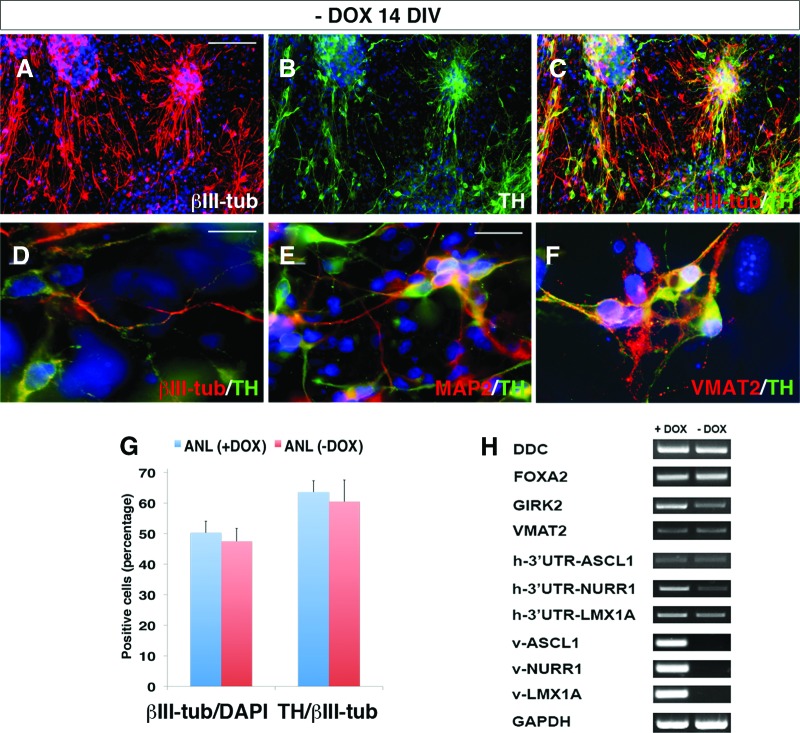Figure 4.
IMR90-human induced pluripotent stem cell (hiPSC)-derived DA neurons show a stable phenotype after doxycycline withdrawal. IMR90-hiPSCs were infected with ANL viral cocktail, and then DOX was added for the first 6 days of differentiation and withdrawn for other 14 DIV. (A–D): Immunocytochemical analysis shows that 14 days after DOX withdrawal, IMR90-hiPSC-derived DA neurons stably coexpress βIII-tubulin and TH (A–C), sharing differentiated morphology (D). (E, F): DA neurons obtained after 2 weeks of DOX withdrawal also express MAP2 (E) and VMAT2 (F). (G): Quantification of TH/βIII-tubulin and βIII-tubulin/DAPI yield in cells kept with DOX (ANL (+DOX)) and 14 DIV after DOX withdrawal (ANL (−DOX)). (H): Transcriptional characterization of DA neurons kept with DOX (+DOX) or after 14 DIV of DOX withdrawal (−DOX). h-3′UTR-ASCL1, h-3′UTR-NURR1, and h-3′UTR-LMX1A indicate the human endogenous gene expression, whereas v-ASCL1, v-NURR1, and v-LMX1A indicate the expression of the lentiviral vectors. The cell nuclei are stained with DAPI. Scale bars = 100 μm (A–C), 40 μm (E), and 20 μm (D, F). Abbreviations: ANL, ASCL1, NURR1, and LMX1A; DAPI, 4′,6-diamidino-2-phenylindole; DA, dopamine; DIV, days in vitro; DOX, doxycycline; GAPDH, glyceraldehyde-3-phosphate dehydrogenase; TH, tyrosine hydroxylase; βIII-tub, βIII-tubulin; UTR, untranslated region.

